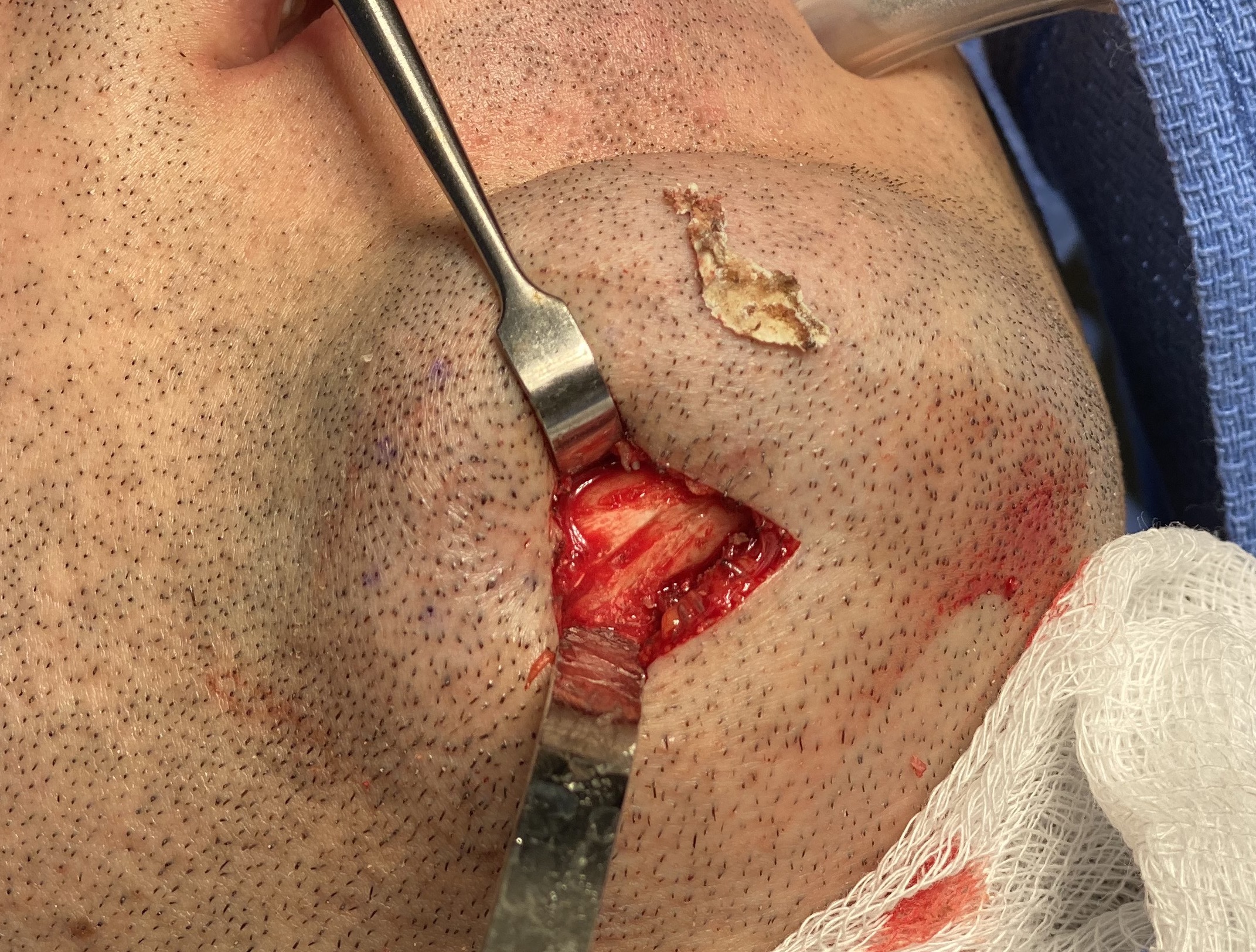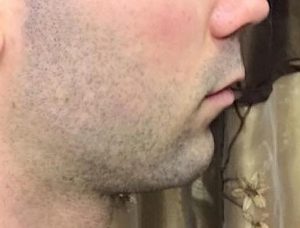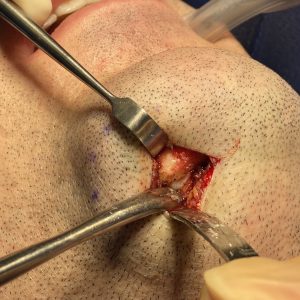Background: The sliding genioplasty for aesthetic chin augmentation has numerous advantages. It is an autologous procedure meaning that its risk of infection is rare. Once healed no long-term postoperative complications can usually occur from the bone. Also since it is done intraorally it has no visible scar.
Like all operations, however, it has its own disadvantages. One potential disadvantage and surgical risk is asymmetry. Such asymmetries can be midline, vertical or horizontal in orientation. How such postoperative chin asymmetries would be managed will differ based on what the specific issue is. But avoiding recutting the bone is what most patients would prefer.
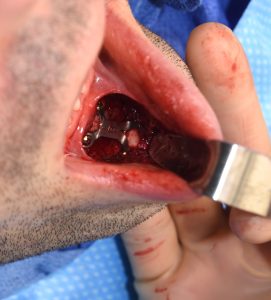
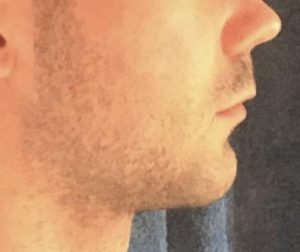
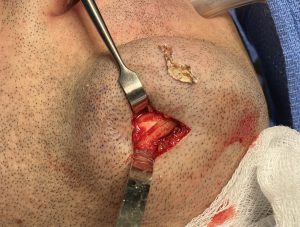
Since a sliding genioplasty is fundamentally about separating the end of the chin bone and moving it into a new desired suspended position held by a plate and screws, it can have dimensional variations around its horizontal and vertical axes that can affect the symmetry of its appearance. Chin position asymmetries can occur from how the plate is applied, the symmetry of the bone cuts on each side, and whether any natural chin asymmetry existed before surgery. Working inside a limited working space does not allow every one of these variables always to be completely seen in the detail by which the postoperative result will be assessed.
Case Highlights:
1) Sliding genioplasty plate fixation sets the amount of horizontal advancement and midline positioning.
2) The axis that is not seen very well in a sliding genioplasty is rotation which if it occurs can create a more prominent corner on one side.
3) Since a prominent corner after a sliding genioplasty is a 3D problem (horizontal and vertical) the most effective resolution is a submental shaving technique.
Dr. Barry Eppley
Indianapolis, Indiana

